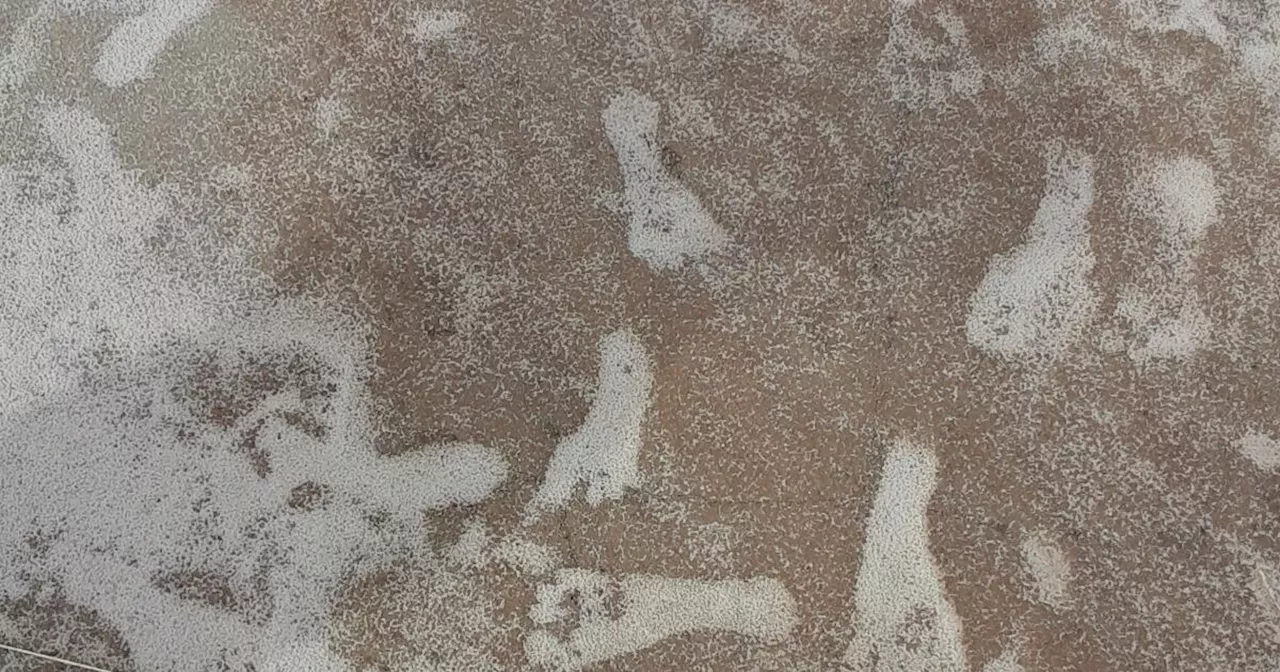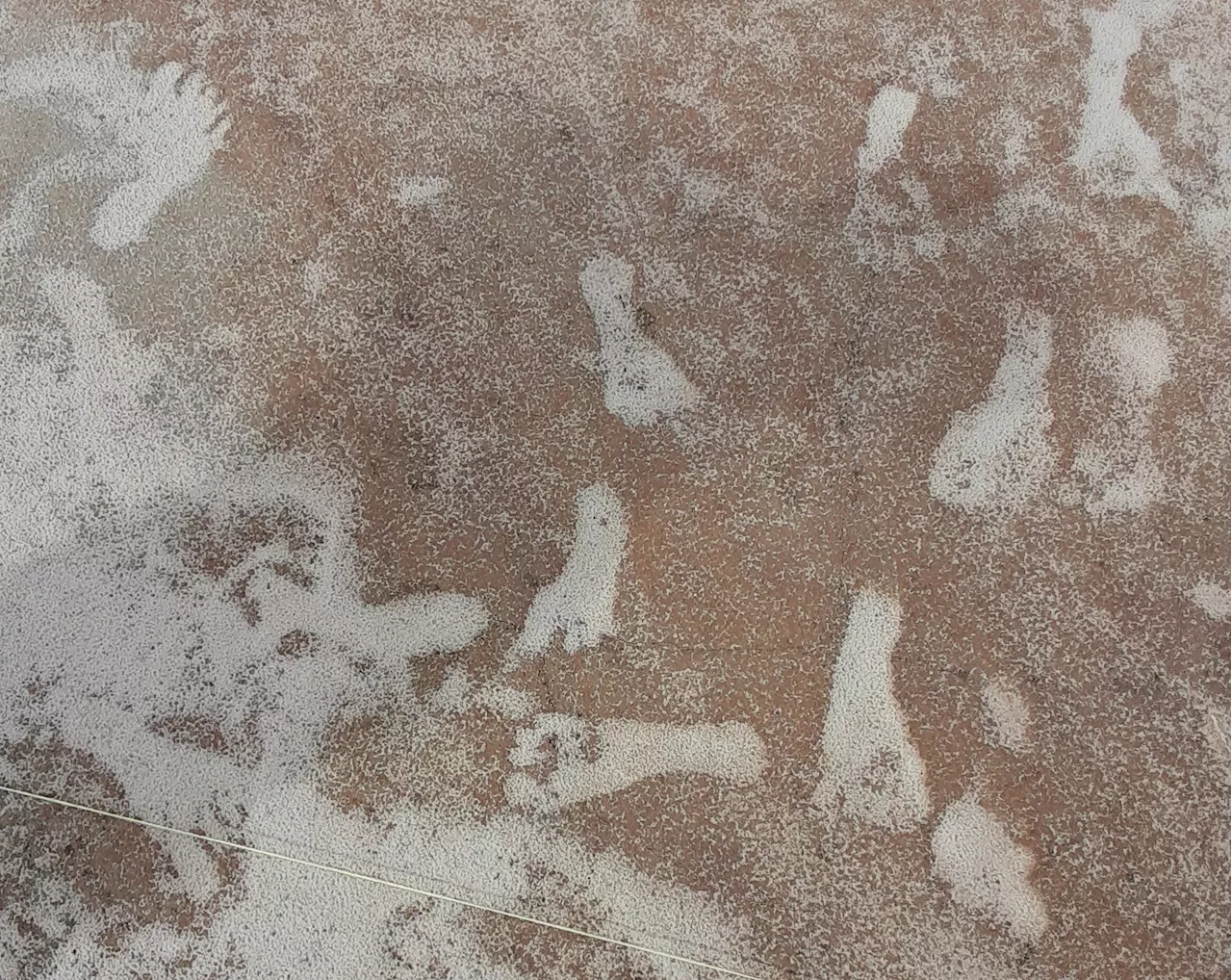Humans trod the landscape of North America thousands of years earlier than previously thought, according to new research that confirms the antiquity of fossilized footprints at White Sands National Park in New Mexico using two further dating approaches.
The footprints date to about 21,000 to 23,000 years ago, based on radiocarbon and optically stimulated luminescence dating techniques, researchers said on Thursday, showing that our species Homo sapiens already had a foothold in North America during the most-inhospitable conditions of the last Ice Age.
"Every dating technique has strengths and weaknesses, but when three different techniques all converge on the same age range, then the resulting ages are exceptionally robust," said Jeff Pigati, a research geologist at the U.S. Geological Survey in Denver and co-lead author of the research published in the journal
Previous archaeological evidence had suggested that human occupation of North America started roughly 16,000 years ago, according to study co-author Matthew Bennett, a professor of environmental and geographical sciences at Bournemouth University in England. The technique is used to determine the age of organic material as old as roughly 60,000 years based on the decay of an isotope called carbon-14, a variant of the element carbon. Living organisms absorb carbon-14 into their tissue. After an organism dies, this isotope changes into other atoms over time, providing a metric for determining age.
United States Latest News, United States Headlines
Similar News:You can also read news stories similar to this one that we have collected from other news sources.
 Further evidence points to footprints in New Mexico being the oldest sign of humans in AmericasNew research shows that fossil footprints discovered at the edge of an ancient lakebed in New Mexico's White Sands National Park date back to between 21,000 and 23,000 years ago
Further evidence points to footprints in New Mexico being the oldest sign of humans in AmericasNew research shows that fossil footprints discovered at the edge of an ancient lakebed in New Mexico's White Sands National Park date back to between 21,000 and 23,000 years ago
Read more »
 Further evidence points to footprints in New Mexico being the oldest sign of humans in AmericasNew research shows that fossil footprints discovered at the edge of an ancient lakebed in New Mexico's White Sands National Park date back to between 21,000 and 23,000 years ago.
Further evidence points to footprints in New Mexico being the oldest sign of humans in AmericasNew research shows that fossil footprints discovered at the edge of an ancient lakebed in New Mexico's White Sands National Park date back to between 21,000 and 23,000 years ago.
Read more »
 Further evidence points to footprints in New Mexico being the oldest sign of humans in AmericasNew research shows that fossil footprints discovered at the edge of an ancient lakebed in New Mexico's White Sands National Park date back to between 21,000 and 23,000 years ago. Previously, archaeologists thought human ancestors arrived about 15,000 years ago. The research was published Thursday in the journal Science. Scientists analyzed conifer pollen and quartz grains found at the site to reach date estimates. Earlier research that analyzed seeds of aquatic plants found at the site also produced similar date estimates. Ancient humans at White Sands lived alongside giant ground sloths, bison and other megafauna.
Further evidence points to footprints in New Mexico being the oldest sign of humans in AmericasNew research shows that fossil footprints discovered at the edge of an ancient lakebed in New Mexico's White Sands National Park date back to between 21,000 and 23,000 years ago. Previously, archaeologists thought human ancestors arrived about 15,000 years ago. The research was published Thursday in the journal Science. Scientists analyzed conifer pollen and quartz grains found at the site to reach date estimates. Earlier research that analyzed seeds of aquatic plants found at the site also produced similar date estimates. Ancient humans at White Sands lived alongside giant ground sloths, bison and other megafauna.
Read more »
 Further evidence points to footprints in New Mexico being the oldest sign of humans in AmericasNew research shows that fossil footprints discovered at the edge of an ancient lakebed in New Mexico's White Sands National Park date back to between 21,000 and 23,000 years ago.
Further evidence points to footprints in New Mexico being the oldest sign of humans in AmericasNew research shows that fossil footprints discovered at the edge of an ancient lakebed in New Mexico's White Sands National Park date back to between 21,000 and 23,000 years ago.
Read more »
 Further evidence points to footprints in New Mexico being the oldest sign of humans in AmericasThe evidence challenges the once-conventional wisdom that humans didn’t reach the Americas until a few thousand years before rising sea levels covered the Bering land bridge between Russia and Alaska.
Further evidence points to footprints in New Mexico being the oldest sign of humans in AmericasThe evidence challenges the once-conventional wisdom that humans didn’t reach the Americas until a few thousand years before rising sea levels covered the Bering land bridge between Russia and Alaska.
Read more »
 Further evidence points to footprints in New Mexico being the oldest sign of humans in AmericasNew research confirms that fossil human footprints in New Mexico are likely the oldest direct evidence of human presence in the Americas, a finding that upends what many archaeologists thought they knew about when our ancestors arrived in the New World.
Further evidence points to footprints in New Mexico being the oldest sign of humans in AmericasNew research confirms that fossil human footprints in New Mexico are likely the oldest direct evidence of human presence in the Americas, a finding that upends what many archaeologists thought they knew about when our ancestors arrived in the New World.
Read more »
